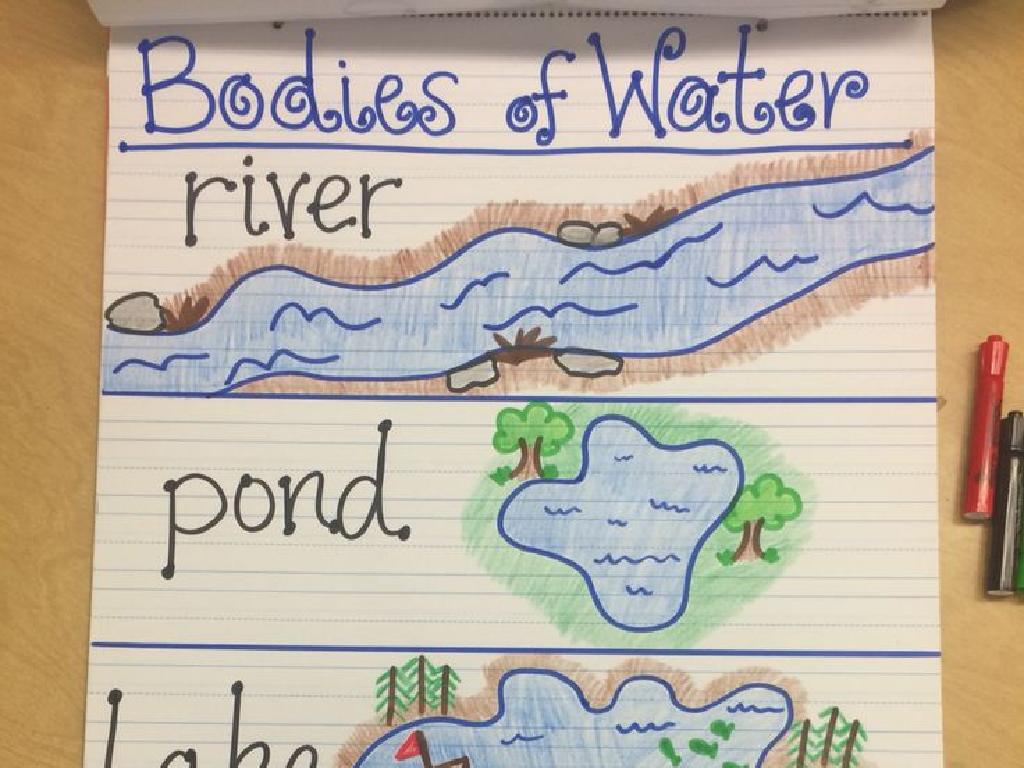Aldehydes And Ketones
Subject: Science
Grade: High school
Topic: Organic Chemistry
Please LOG IN to download the presentation. Access is available to registered users only.
View More Content
Introduction to Aldehydes and Ketones
– Explore Organic Chemistry
– Defining Aldehydes and Ketones
– Aldehydes have a carbonyl group at the end of a carbon chain, while ketones have it within the chain.
– Significance in Chemistry
– Essential in synthesis and reactions
– Their role in daily life
– Found in perfumes, plastics, and as flavoring agents
|
This slide introduces students to the fundamental concepts of aldehydes and ketones within the realm of organic chemistry. Begin by explaining the basics of organic chemistry, emphasizing the study of carbon-containing compounds. Then, move on to define aldehydes and ketones, highlighting the structural differences between the two, with aldehydes having a carbonyl group (C=O) at the end of a carbon chain and ketones having one within the carbon chain. Discuss their importance in chemical synthesis and various reactions, and how they are ubiquitous in everyday life, being components of fragrances, flavors, and materials. Encourage students to think of examples from their daily experiences where they might encounter these compounds.
Structural Characteristics of Aldehydes and Ketones
– Carbonyl group significance
– A carbon atom double-bonded to an oxygen
– Aldehydes vs. Ketones
– Aldehydes have a hydrogen atom attached to the carbonyl; ketones have two carbon groups
– Identifying in chemical structures
– Look for the C=O group; aldehydes are at the end, ketones are in the middle
|
This slide aims to explain the structural characteristics that define aldehydes and ketones, both of which are organic compounds containing a carbonyl group. The carbonyl group, which is a carbon atom double-bonded to an oxygen atom, is central to the chemistry of these compounds. Aldehydes differ from ketones in that the carbonyl group in aldehydes is bonded to at least one hydrogen atom, whereas in ketones, it is bonded to two carbon groups. When identifying these compounds in chemical structures, students should look for the placement of the carbonyl group; it will be at the end of the carbon chain in aldehydes and within the carbon chain in ketones. This distinction is crucial for understanding the chemical behavior and reactivity of these compounds in organic chemistry.
Nomenclature of Aldehydes and Ketones
– IUPAC naming for Aldehydes
– Aldehydes: suffix ‘-al’, e.g., Methanal (Formaldehyde)
– IUPAC naming for Ketones
– Ketones: suffix ‘-one’, e.g., Propanone (Acetone)
– Understanding common names
– Historical names still in use, e.g., Acetaldehyde
– Examples of Aldehydes and Ketones
– Aldehydes: Butanal, Benzaldehyde; Ketones: Butanone, Acetophenone
|
This slide introduces the IUPAC system of nomenclature for aldehydes and ketones, which is essential for clear communication in chemistry. Aldehydes are named with an ‘-al’ suffix, while ketones use ‘-one’. It’s important to also be familiar with common names that are historically used, as they often appear in literature. Provide examples to illustrate both IUPAC and common names, helping students to recognize and apply naming conventions. Encourage students to practice by naming various structures and converting common names to IUPAC names.
Physical Properties of Aldehydes and Ketones
– Boiling points and solubility
– Higher than hydrocarbons, lower than alcohols. Soluble in water due to polar carbonyl group.
– Dipole moments and polarity
– Presence of a polar carbonyl group creates a dipole moment, affecting solubility and reactivity.
– Sensory properties: smells and flavors
– Many have distinctive odors; used in perfumes and flavorings.
|
This slide aims to explain the physical properties of aldehydes and ketones, focusing on their boiling points, solubility, dipole moments, polarity, and sensory properties. Aldehydes and ketones have higher boiling points than hydrocarbons due to their polar carbonyl groups but lower than alcohols because they cannot hydrogen bond as effectively. Their polarity also allows them to dissolve in water and other polar solvents, making them important in biological processes and industrial applications. The carbonyl group’s dipole moment influences their chemical reactivity. Lastly, many aldehydes and ketones are responsible for the smells and flavors of various natural and synthetic substances, which is why they’re used in the food and fragrance industries. Encourage students to think of examples of flavors or smells they know that might be derived from these compounds.
Chemical Reactions of Aldehydes and Ketones
– Oxidation of aldehydes
– Aldehydes oxidize to form carboxylic acids
– Reduction of aldehydes and ketones
– Reduction turns aldehydes into primary alcohols and ketones into secondary alcohols
– Nucleophilic addition reactions
– A nucleophile adds to the carbon of the carbonyl group, forming a new compound
|
This slide covers the key chemical reactions involving aldehydes and ketones, which are crucial functional groups in organic chemistry. When aldehydes are oxidized, they form carboxylic acids, a reaction that can be used to distinguish them from ketones. Both aldehydes and ketones can be reduced; aldehydes become primary alcohols while ketones become secondary alcohols. Nucleophilic addition reactions are characteristic of the carbonyl group found in these compounds, where a nucleophile attacks the electrophilic carbon atom. Understanding these reactions is fundamental for students as they explain the behavior and transformation of these organic molecules in various chemical contexts.
Applications of Aldehydes and Ketones
– Industrial uses of aldehydes and ketones
– Used in making plastics, perfumes, and paints
– Biological roles of these compounds
– Play a part in metabolism and as signaling molecules
– Aldehydes and ketones in daily life
– Found in flavorings, fragrances, and preservatives
– Examples in everyday products
– Vanilla flavor (vanillin) and rubber synthesis (isoprene)
|
This slide aims to highlight the practical applications and significance of aldehydes and ketones in various fields. In industry, they are essential in the synthesis of a wide range of products such as plastics, perfumes, and paints. Biologically, these compounds are integral to metabolic pathways and can act as signaling molecules. Students should recognize the presence of aldehydes and ketones in everyday products, such as flavorings, fragrances, and preservatives, making the chemistry more relatable. Examples include vanillin, which is used for vanilla flavoring, and isoprene, which is a key component in the production of synthetic rubber. Encourage students to think of other common items that might contain these organic compounds.
Class Activity: Identifying Aldehydes and Ketones
– Overview of molecular model activity
– Instructions on building structures
– Use model kits to construct aldehyde and ketone molecules
– Group work to identify compounds
– Work in groups to determine which is an aldehyde and which is a ketone
– Discussion and sharing of results
– Compare findings with the class and discuss the differences
|
This class activity is designed to help students visually and tangibly understand the structure of aldehydes and ketones using molecular models. Students will use model kits to build molecules and identify the structural differences between aldehydes and ketones. In groups, they will determine which compounds are aldehydes and which are ketones based on the presence of the carbonyl group. After the activity, groups will share their findings and engage in a class discussion to reinforce their understanding. Possible variations of the activity could include identifying the molecules by their IUPAC names, predicting the reactivity of the compounds, or creating a presentation on their findings.


/historical_maps_global_age.jpg)



